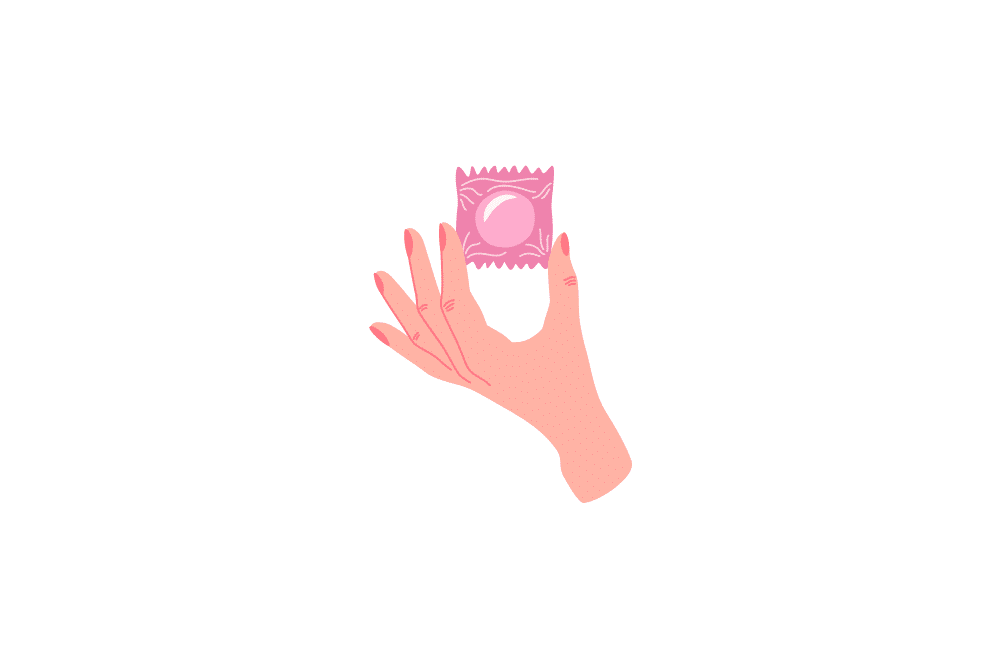Let’s talk about something that’s super important but often swept under the rug: safe sex practices. Yep, we’re diving into the world of sexual health, and trust us, it’s a journey worth taking.
In Australia, where having a good time is practically in our DNA, it’s essential to equip ourselves with the knowledge and tools to stay safe between the sheets. Because let’s face it, nobody wants to deal with the aftermath of an unplanned pregnancy or a nasty sexually transmitted infection (STI).
So, we’re here to arm you with the must-know tips and tricks to confidently practise safe sex. From understanding what safe sex really means to mastering the art of communication with your sexual partner, we’ve got you covered.
Understanding Safe Sex
Alright, let’s start by getting on the same page about what safe sex really means.
Safe sex isn’t just about using protection during intercourse (although that’s definitely a big part of it). It’s a mindset, a conscious choice to prioritise your sexual health and well-being. Safe sex means taking steps to reduce the risk of sexually transmitted infections (STIs) and unplanned pregnancies while still enjoying a fulfilling sex life.
Now, why should you care about safe sex?
Well, apart from the obvious perks of staying healthy and pregnancy-free, practising safe sex is your best defence against STIs. And let’s be real, nobody wants to deal with the discomfort of an infection. Plus, safe sex gives you peace of mind, knowing that you’re taking control of your sexual health and future.
The myths and misconceptions surrounding safe sex
We’ve all heard them, from “I can’t get pregnant if it’s my first time” to “I don’t need protection if I’m in a committed relationship.” But let’s set the record straight: STIs don’t care if it’s your first or hundredth time, and commitment doesn’t guarantee immunity. Safe sex is for everyone, regardless of age, relationship status, or experience level.
So, let’s ditch the myths and embrace the facts. Safe sex is cool, it’s smart, and it’s essential for a happy and healthy sex life.
Safe Sex Methods

Now it’s time to get down to the nitty-gritty of safe sex methods. First up, the trusty condom!
Condom Use
The humble condom – a true MVP in the world of safe sex practices. These little rubber miracles not only provide a barrier against STIs and unplanned pregnancies but also give you the peace of mind to enjoy intimacy without worrying about the consequences. So, how secure are condoms? Well, when used correctly, they’re pretty darn reliable – 98% effective in fact.
Tips for Proper Condom Use
Proper condom use is key to maximising their effectiveness. Make sure to check the expiration date (yes, condoms have those too), carefully open the packet to avoid damaging the condom, and pinch the tip before rolling it down the shaft to leave some space for, ahem, fluids. And remember, one condom per session – no double-dipping.
Different Types of Condoms Available in Australia
Did you know that condoms come in all shapes, sizes, and flavours? Okay, maybe not flavours (let’s keep it safe for consumption), but you get the idea. In Australia, you’ll find a wide range of condoms to suit every preference and need. From ultra-thin for enhanced sensitivity to ribbed and studded for extra pleasure, there’s something for everyone. And hey, don’t forget about latex-free options for those with allergies or sensitivities.
So, whether you’re gearing up for a steamy night with your partner or on the prowl for a casual encounter, remember: when it comes to safe sex, condoms are your best friend. Stay protected, stay savvy, and let the good times roll.
Birth Control Options
Taking control of your reproductive destiny stretches beyond the trusty condom to other birth control methods, such as:
Birth Control Pills
Oral contraceptives, aka “the pill,” are a popular choice for many Australian women. These daily pills contain hormones that prevent ovulation and thicken cervical mucus, making it harder for sperm to reach the egg.
Patches
Birth control patches are another convenient birth control option. These small patches, worn on the skin, release hormones similar to those found in the pill, providing continuous protection against pregnancy for a week at a time.
Intrauterine Devices (IUDs)
Looking for long-term contraception? Enter the intrauterine device. These small, T-shaped devices are inserted into the uterus by a healthcare provider and can protect against pregnancy for several years, depending on the type.
Implant
Implants offer long-lasting contraception by releasing hormones into the body, preventing ovulation and thickening cervical mucus. This small, flexible rod is inserted under the skin of the upper arm by a healthcare provider and can protect against pregnancy for up to several years.
Morning After Pill
Also known as emergency contraception, the morning-after pill is a backup method to prevent pregnancy after unprotected sex or contraceptive failure. Available over-the-counter at pharmacies or via same-day delivery with Youly, it works by delaying ovulation or preventing fertilisation, but it should be taken as soon as possible after intercourse for maximum effectiveness.
Vaginal Ring
The vaginal ring is a flexible, plastic ring inserted into the vagina, releasing hormones similar to those found in birth control pills. It’s worn for three weeks at a time, followed by a week without the ring, during which menstruation occurs. This method provides continuous protection against pregnancy when used correctly.
These additional birth control options offer flexibility and convenience for women looking to take control of their reproductive health beyond traditional methods. Discuss with your healthcare provider to find the best option for you.
The Importance of Consistent and Correct Use
Here’s the thing about birth control: it only works if you use it consistently and correctly. Whether you’re popping pills or sporting an IUD, following the instructions to a T is vital for maximum effectiveness. So set a reminder in your phone, mark it on your calendar – whatever it takes to stay on track and protect yourself against unintended pregnancy.
Where to Access Birth Control in Australia
Good news, ladies! Accessing birth control in Australia is easier than ever. You can get contraceptive pills, vaginal rings and patches from your local pharmacy with a prescription from your doctor. Or, you can save yourself a whole lot of time and hassle, and buy them online with Youly. If you’re not sure where to start, your healthcare provider can point you in the right direction and help you find the method that’s best for you. Alternatively, your local sexual health clinic can help you out.
Communicating with Partners

When it comes to safe sex, communication is key. Let’s dive into why it’s so important and how to navigate those sometimes-tricky conversations with your partner.
Imagine you’re about to get intimate with someone new, and the topic of safe sex comes up. Awkward? Maybe. Necessary? Absolutely. Open and honest communication with your sexual partners is non-negotiable when it comes to protecting yourself and each other.
How to Discuss Safe Sex Practices and STI Testing
So, how do you bring up the subject without killing the mood? Start by setting the stage for an open dialogue. Choose a neutral setting, approach the conversation with empathy and understanding, and be prepared to listen as well as speak. And remember, it’s not just about discussing safe sex practices – it’s also about talking openly about STI testing and sexual health. Normalise the conversation, destigmatise testing, and make it clear that you’re both in this together.
Strategies for Negotiating Condom Use and Other Safety Measures
Now, let’s talk tactics. Negotiating condom use and other safety measures can feel a bit like walking a tightrope, but it doesn’t have to be complicated. Be assertive, but respectful. Express your concerns and preferences clearly, and maintain your boundaries where necessary. And hey, if your partner isn’t on board with using protection, it might be time to reassess whether they’re worth the risk.
At the end of the day, communication is the foundation of any healthy relationship – sexual or otherwise. So don’t be afraid to speak up, ask questions, and advocate for your sexual health and well-being. Your body, your rules, your peace of mind.
STI Prevention and Testing
Let’s get real about STIs – what they are, why testing is important, and how to overcome the stigma to prioritise your sexual health.
Common STIs in Australia
STIs are more common than you might think, and here in Australia, we’re not immune. From chlamydia and gonorrhoea to HIV and beyond, knowing the facts about these infections is the first step toward protecting yourself and your partners. So, let’s break it down: what are they, how are they transmitted, and what are the symptoms?
- Chlamydia: Chlamydia is a common bacterial infection transmitted through unprotected vaginal, anal, or oral sex with an infected person. Keep in mind that any activity that passes sexual fluids (like sharing sex toys), may also spread chlamydia. Symptoms may include abnormal vaginal or penile discharge, pain or burning during urination, and genital itching. However, many infected people may not experience any symptoms.
- Gonorrhoea: Gonorrhoea is a bacterial infection caused by Neisseria gonorrhoeae. It’s transmitted through unprotected oral, vaginal or anal sex with an infected person, or any activity that passes body fluids. Symptoms may include painful urination, abnormal discharge from the genitals, and discomfort in the lower abdomen. As with chlamydia, some infected individuals may not display symptoms.
- HIV (Human Immunodeficiency Virus): HIV attacks the immune system. It’s primarily transmitted through unprotected sexual intercourse, sharing needles or syringes, and from mother to child during childbirth or breastfeeding. Early symptoms may include fever, fatigue, swollen lymph nodes, and a sore throat. Without treatment, HIV can progress to AIDS (Acquired Immunodeficiency Syndrome), a severe stage of the disease.
- Genital Herpes: Genital herpes is caused by the herpes simplex virus (HSV). It’s spread through sexual contact and skin to skin contact. Symptoms include painful blisters or sores in the genital area, itching, and flu-like symptoms during initial outbreaks.
- Syphilis: Syphilis is a bacterial infection caused by Treponema pallidum. It’s transmitted through sexual contact, including vaginal, anal and oral sex. Symptoms vary depending on the stage of infection but may include painless sores or ulcers, rash, fever, and swollen lymph nodes.
- HPV (Human Papillomavirus): HPV is a common virus transmitted through sexual contact. Most HPV infections don’t cause any symptoms, but some strains can lead to visible genital warts.
- Trichomoniasis: Trichomoniasis is a parasitic infection caused by Trichomonas vaginalis. It’s transmitted through sexual contact. Symptoms may include vaginal discharge, itching, and discomfort during urination or sex.
The Importance of Regular STI Testing
Regular STI and STD testing is like a health check-up for your nether regions – it’s a proactive step toward maintaining your sexual health and the health of those you care about. Whether you’re sexually active or not, getting tested regularly is key to catching infections early and preventing their spread. And hey, no shame in the testing game – it’s a responsible choice that shows you care about yourself and your partners.
What About the Stigma Surrounding STIs?
Here’s the thing about STIs: they don’t discriminate.
They can happen to anyone, regardless of age, gender, or sexual orientation. So let’s bust the stigma and normalise seeking medical care when needed. Getting tested for STIs isn’t a mark of shame or being “dirty” or unhygienic – it’s a sign of strength and responsibility. And if you do test positive for an infection, remember: it’s treatable. With the right care and support, you can get back on track to good health and continue enjoying a fulfilling and safer sex life.













